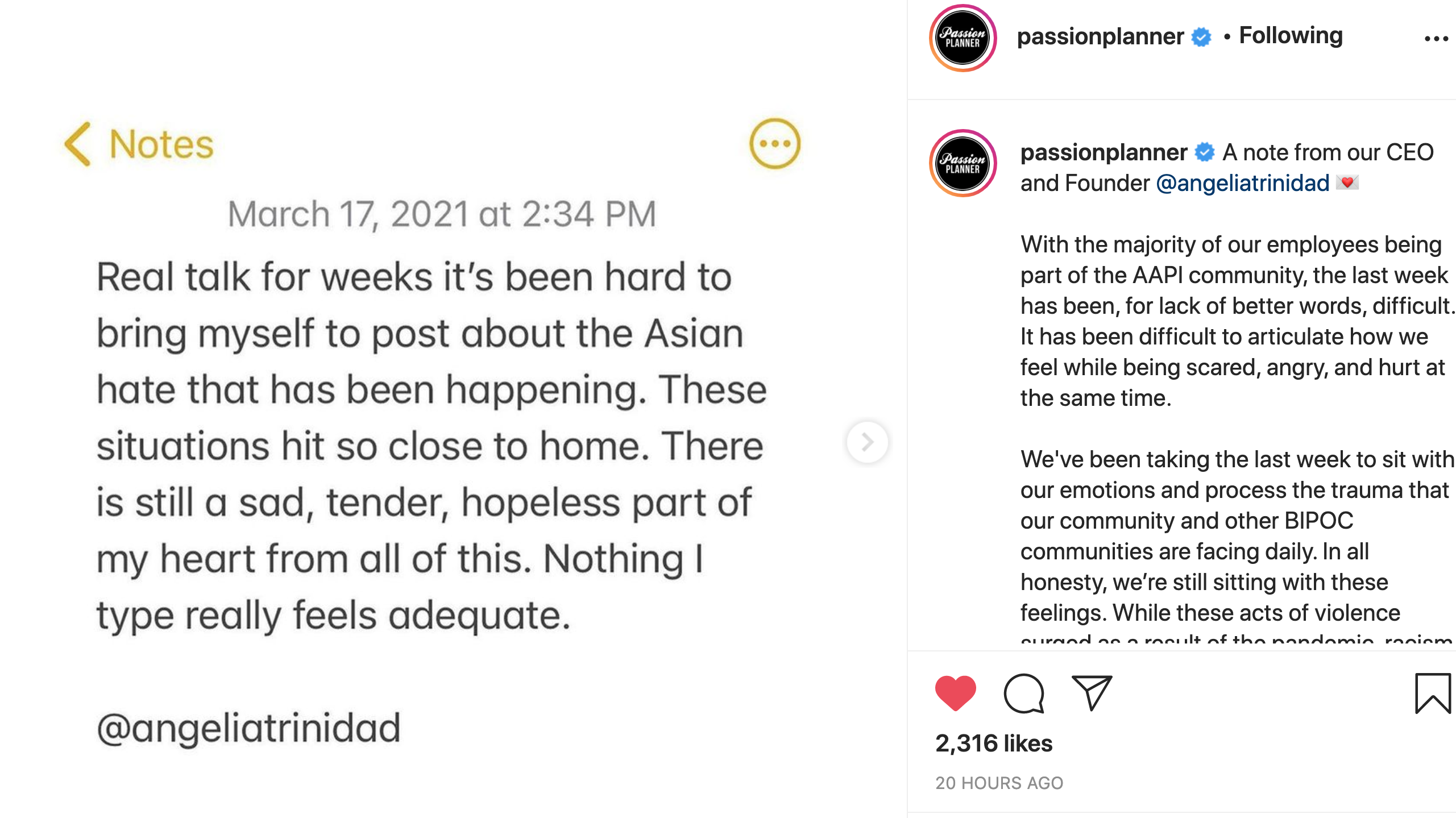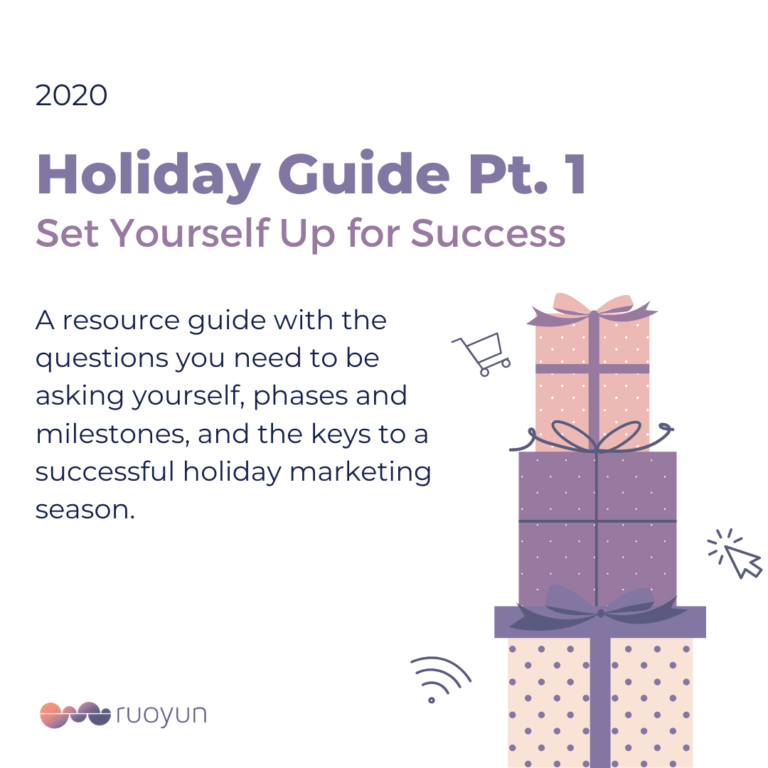Navigating Diversity and Inclusion in a Time of Crisis
As brands, this past year has invited many of us to consider how we can show up for the better. The work that we’ve done internally is still ongoing and it’s a long journey. Yet, the world still keeps on turning and saddening events will arise and we, as leaders, are being asked to speak up.
If you have read my original blog, “Crisis Communication Plan”, you may remember what I’ve said: The precedence is set that brands do have a voice on societal matters.
People want to feel like they’re able to be confident that brands will:
- Offer them a great experience
- Be something they’re proud to be associated with
- Align with their values
Yet when it comes to you and your brand or company talking about deeply complex societal issues like diversity and inclusivity, it’s a hard road to navigate, but it is extremely important in the age of technology and social media.
Why is it so hard to navigate? Because talking about issues that affect us as human beings is naturally messy and emotional. These are issues that affect our friends, customers, higher-ups, partners, coworkers, etc. They are close to home for us and we feel the emotional pull to do better.
They are not simple and easy to solve. Personally, I’ve always said that humans are like onions. We are multi-layered, we might make you cry when we’re raw, but we always bring recipes to life and create a flavorful experience. Recipes take time to come to life- so does the culture of a business, family unit, and our community. It takes time to make progress (and caramelized onions) and, unfortunately, there is not a silver bullet for either.
So how do we respond to events that arise when we are still deep in doing our work?
We all want that perfect answer that will fix it all. But the truth is- there isn’t a perfect answer. Instead, there is a process that you can walk through to put your values into your work.
Here are a set of questions that I help navigate my clients through as they put their crisis communication plan into action.
1) Understand the situation: Is this event related to a cause or a crisis?
- A crisis is something that directly affects the majority of us not based on past societal issues, like the pandemic. It’s often unforeseen and we have to communicate a response to let our customers know what to expect when they are interacting with us.
- A cause is something that is aligned with our values and we feel inclined to speak up about it. Causes will have milestone events that are good and bad. In those moments, it may be our role to amplify the larger message and continue the conversation.
No matter what the event is, give yourself time to process what has occurred. Remember, your customers and employees want to hear that you care, but it doesn’t mean you need to respond instantaneously.
The authenticity and sincerity of your message are always more important than the speed at which you release it.
2) Where is my role in this conversation?
Everyone has a different role that they play in the conversation. While we may feel the need to instantly react and support, please ask yourself first. Am I a supporter or am I a direct stakeholder?
What that means is: “Are you directly effected by this event?”
If we are directly effected:
Please post and share your narrative in relation to this event.
- Personal brands are allowed to share personal narratives, but please remember, you control how much you want to share. So take your time and share it in your unique way because your narrative may resound with someone where other narratives may not.
- For businesses, this is a moment to show up in your company culture. While your business may not be directly affected by these events, your employees, and potentially your customers, are. So decide how you want to show up whether it’s internal communication and/or then publically share the voices of those who are in the forefront. Consistency is key, if your public message does not match with your internal company culture, it can come across as lacking transparency and eroding trust.
Remember, you don’t need the perfect answer because there is no right way to explain complex societal issues in a single post. But it’s about creating a post when you feel like the time is right to speak up in your own unique way like Passion Planner.

If we’re not directly affected:
You can still support without clogging up the feed with your posts, simply share the content of the original poster to help them amplify their reach. It is important to play a supportive role and allow the affected community to take the space they need.
A general rule is: If you have spoken about it in the past, then the precedence is set for you to speak about it again.
However, that doesn’t mean you should just keep posting the same things. Like Netflix, consider amplifying the voices of the people involved and make sure you are prioritizing good internal communication so that both employees and customers feel seen.
3) How and where should you post?
All platforms function differently and people hop on these platforms for different reasons. What matters is how you define your role in this conversation (see step #2).
If you want to post:
- Twitter is designed to give updates on where you stand on issues whether it’s simple updates in how it affects your day-to-day or in what you believe in. If you are supporting the cause, consider sharing someone else’s narrative or liking their posts.
- Instagram, Facebook, or Linkedin:
- If you feel called to make a post, then create a post that reflects you and your brand. Sincerity and authenticity are key here. Otherwise, share stories to amplify other voices.
- Just remember that these only last 24 hours and not everyone will see so be sure to save them in your highlights. If you want, consider creating a permanent Instagram highlight called “Causes we love” so you can speak to multiple movements that you stand behind. This also acts as an easy way for new customers to get an idea of what you’re all about and what you support in just a few seconds.
If you are here to support, but not necessarily post:
- That’s okay too. You do not need to be an expert. You can be a listener and supporter by sharing, liking, and commenting on videos on Tiktok, Instagram, and others to make sure they get bumped up in the algorithm.
Remember: In the pause between reaction and action is where we hold our power.
While we may feel the need to respond to situations of negativity or injustice instantaneously, please remember that behind every post is a human being with more thoughts and feelings that could ever fit into a single social media post.
It takes courage for us to face our shadows. Please honor and remember that otherwise, shame will stop progress.
– Ruoyun Xu Killian
Give space for those who are processing the information, not everyone is an activist and be the first person to talk. Many people can be self triggered by the events and need time.
The real work happens offline
Social media is a reflection of our society and the work that we do in the physical world is what creates sustainable change.
If you’re starting:
- Learn why this event is happening.
- Understand your role to support, not everyone is an activist and we are ALL needed to make a difference.
- Most importantly, have conversations with others around you so we can work on solving this together.
Every single action that we do will eventually create a wave of impact.
Stay safe and we will get through this together.
About the Author
Ruoyun Xu Killian is a Digital Marketing Strategist, with over 10 years in the industry she works with changemakers to amplify the impact they are making in their communities through implementing Human-Centered Marketing and Business. As an Asian American Austin native, she uses her experience from traveling around the world to help businesses build marketing systems that support the humans behind the brand and the customers that they serve. If you have additional questions or need help implement your crisis communication plan, feel free to contact her at ruoyun@rxuconsulting.com






